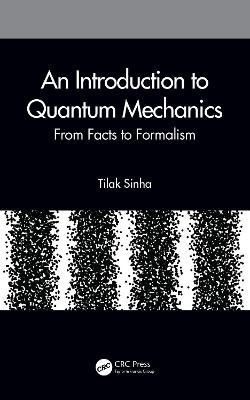
An Introduction to Quantum Mechanics
CRC Press (Verlag)
978-0-367-54707-3 (ISBN)
The core content of even the most intricate intellectual edifices is often a simple fact or idea. So is it with quantum mechanics; the entire mathematical fabric of the formal description of quantum mechanics stems essentially from the fact that quantum probabilities interfere (i.e., from the superposition principle). This book is dedicated to substantiating this claim. In the process, the book tries to demonstrate how the factual content of quantum mechanics can be transcribed in the formal language of vector spaces and linear transformations by disentangling the empirical content from the usual formal description. More importantly, it tries to bring out what this transcription achieves.
The book uses a pedagogic strategy which reverse engineers the postulates of quantum mechanics to device a schematic outline of the empirical content of quantum mechanics from which the postulates are then reconstructed step by step. This strategy is adopted to avoid the disconcerting details of actual experiments (however simplified) to spare the beginner of issues that lurk in the fragile foundations of the subject.
In the Copenhagen interpretation of quantum mechanics, the key idea is measurement. But "measurement" carries an entirely different meaning from the connotation that the term carries elsewhere in physics. This book strives to underline this as strongly as possible.
The book is intended as an undergraduate text for a first course in quantum mechanics. Since the book is self contained, it may also be used by enthusiastic outsiders interested to get a glimpse of the core content of the subject.
Features:
Demonstrates why linear algebra is the appropriate mathematical language for quantum mechanics.
Uses a reconstructive approach to motivate the postulates of quantum mechanics.
Builds the vocabulary of quantum mechanics by showing how the entire body of its conceptual ingredients can be constructed from the single notion of quantum measurement.
Tilak Sinha is an Assistant Professor in the Department of Physics at Narasinha Dutt College, Howrah, India. He did his PhD on nonperturbative aspects of quantum field theory from Saha Institute of Nuclear Physics, Kolkata, and held a research position in the University of Wuppertal, Germany before joining Narasinha Dutt College in 2007. His interests include ontological and epistemological issues in the foundations of Quantum Mechanics, Quantum Field Theory, and Physics Education.
Preface. Prologue. Theoretical Framework - A Working Definition. The Empirical Basis of QM. States as Vectors. Observables as Operators. Imprecise Measurements and Degeneracy. Time Evolution of Quantum Systems. Continuous Spectra. Three Classic Eigenvalue Problems. QM of Composite Systems. A Probability. B Linear Algebra. Bibliography. Index.
| Erscheinungsdatum | 23.08.2021 |
|---|---|
| Zusatzinfo | 3 Tables, black and white; 15 Line drawings, black and white; 15 Illustrations, black and white |
| Verlagsort | London |
| Sprache | englisch |
| Maße | 156 x 234 mm |
| Gewicht | 508 g |
| Themenwelt | Mathematik / Informatik ► Mathematik ► Angewandte Mathematik |
| Naturwissenschaften ► Biologie | |
| Naturwissenschaften ► Physik / Astronomie ► Quantenphysik | |
| ISBN-10 | 0-367-54707-4 / 0367547074 |
| ISBN-13 | 978-0-367-54707-3 / 9780367547073 |
| Zustand | Neuware |
| Haben Sie eine Frage zum Produkt? |
aus dem Bereich


